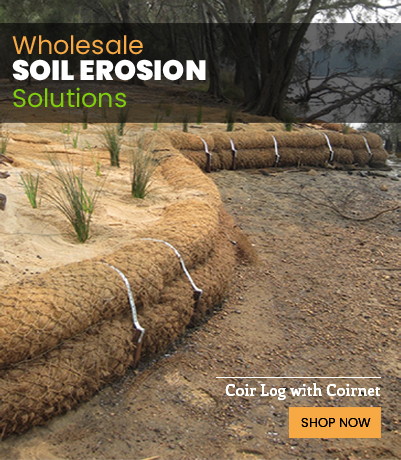Straw blankets, also called erosion control blankets, are frequently used in commercial construction projects to prevent topsoil from shifting. However, gardeners have known for years that straw and other organic materials are equally useful in residential landscaping and gardening projects.
The term ‘straw blanket’ has become a catch-all term for organic erosion control products, including coir mats in both woven and non-woven varieties. It’s also used to mean the layer of loose straw that gardeners have traditionally scattered over their bulbs for protection in colder months.
How to Use Straw Blankets
As mentioned above, a traditional use for straw blankets is winter protection for your plants. As a winter insulator, straw blankets are highly effective. The standard straw layer provides little in the way of nutrients but is an excellent way to maintain a safe temperature for bulbs and perennials.
Coir blankets can protect plants but have the added benefit of being highly resistant to mold, fungus, and bacteria, which can be a problem for a traditional straw layer in winter. They also retain moisture effectively, which can ensure your plants still receive the appropriate amount of water while remaining protected from the elements.
Coir blankets can also be used as an elevated insulator. By staking coir blankets above and around exposed plants, you can easily protect them from snow and ice while maintaining a stable temperature below the blankets.
Using Straw Blankets in Summer
Straw blankets serve a purpose in the summer months, too. As temperatures rise, topsoil tends to dry out, which can discourage plant growth. As coir absorbs water, it prevents topsoil from drying. Coir blankets also decompose naturally, adding nutrients to the soil and ensuring the longevity of your garden.
Using the blankets in summer can also regulate temperatures, which can be an issue in arid climates. Plants that grow too hot can wilt or even burn; straw blankets prevent this with moisture maintenance.
Straw Blankets and Seeding
Your garden isn’t just about your flowers or vegetables; for many people, ‘gardening’ refers to landscaping as well. Straw blankets, especially those made out of coir, are an excellent way to encourage seedling growth when trying to seed a new yard or re-seed a yard that has bare patches. When you apply the blanket on top of your seeded area, it facilitates germination by providing a consistently moist, temperature-controlled space. And again, by being both bacteria- and fungus-resistant, your grass or flower seeds will be protected from dangers that might otherwise negatively impact their growth potential.
Conclusion
Straw blankets, both traditional and coir versions, have a variety of uses in gardening and landscaping. Both are eco-friendly and are constructed of materials that will eventually degrade, though coir blankets tend to be easier to maintain and don’t require ‘flipping’ or soil integration the way straw does. If you want a high-density, sustainable straw blanket that works well in all environments and is both pet-safe and fungus-resistant, a coir blanket may be your best option.

Leave a Reply